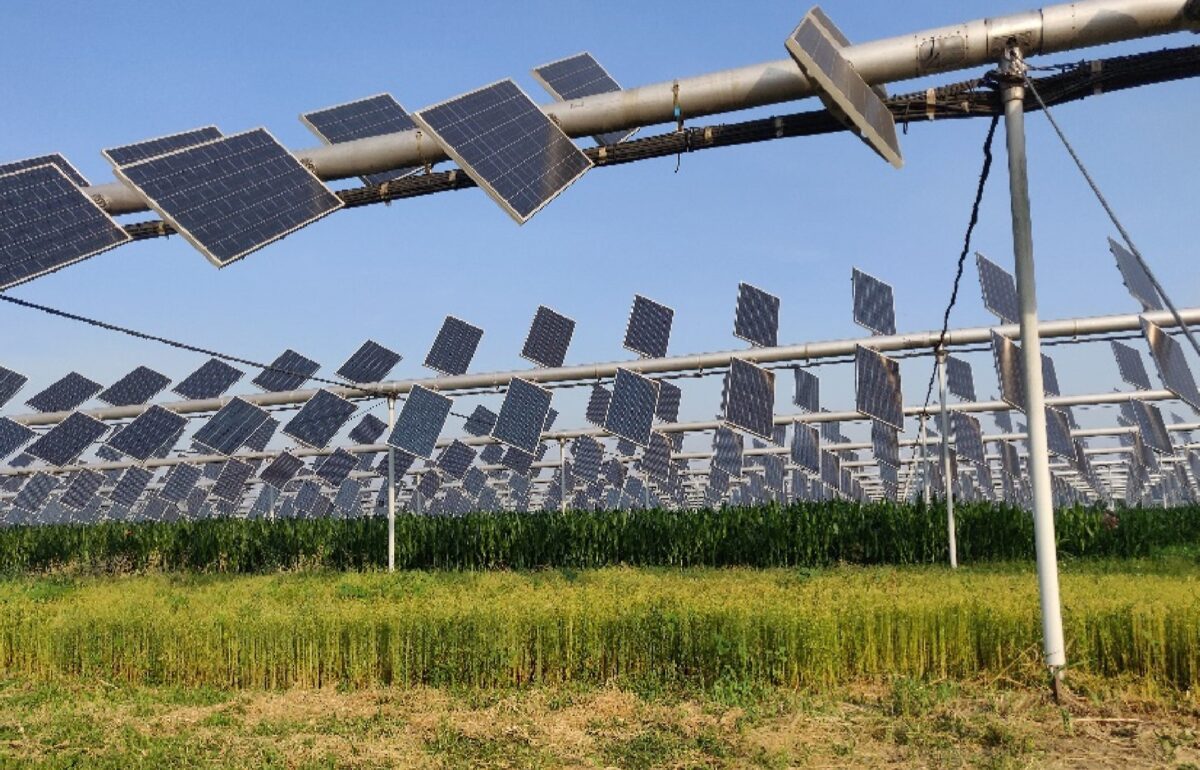A group of researchers from the University of Natural Resources and Life Sciences in Austria has compared the life cycle assessment of vertical bifacial agrivoltaic systems with that of stilted agrivoltaics facilities in an in-depth overall analysis.
In the second systems, the panels are stilted from the ground on a steel structure, and agricultural production is performed underneath. In the first installations, the modules are deployed on vertical structures and agricultural production is performed through the module rows.
The assessment included two mono-use scenarios of arable land – an unchanged agricultural production and a total substitution of the agricultural activity with PV panels. “When assessing agricultural systems with a holistic approach it is necessary to include whole crop rotations, since crop-based agrivoltaic systems need to perform not only for one season, but for praxis relevant time frames,” the scientists specified. “This means to cover a crop rotation that can be repeated and is representative for an average Austrian production system.”
The selected crop rotation for the research was sugar beet, winter wheat, soybean, and winter wheat. “Green manure is assumed to be planted before sugar beet and soybean production, respectively, to protect the soil-borne nitrogen from leaching and make it useable for the following crop,” the group explained.
The life cycle assessment was conducted based on international ISO standards 14040 and 14044.
The scientists said their analysis showed that the vertical bifacial system had lower environmental impacts compared to the stilted system in all assessed impact categories considered. This was achieved thanks to lower material use for the mounting structures and the lower impacts of the glass-glass modules compared to glass-foil modules.
They also found that both agrivoltaic systems led to a reduction of environmental impacts in three of the nine assessed impact categories. “This study shows that the PV electricity production is the main reason for environmental impacts in agrivoltaic systems, while the agricultural part is of minor importance,” the academics stated. “Agrivoltaic systems compare favorably to the studied alternative options with a focus on sole electricity or agricultural production.”
Their findings were introduced in the study “Environmental life cycle assessment of a stilted and vertical bifacial crop-based agrivoltaic multi land-use system and comparison with a mono land-use of agricultural land,” published in Renewable and Sustainable Energy Reviews.
This content is protected by copyright and may not be reused. If you want to cooperate with us and would like to reuse some of our content, please contact: editors@pv-magazine.com.




3 comments
By submitting this form you agree to pv magazine using your data for the purposes of publishing your comment.
Your personal data will only be disclosed or otherwise transmitted to third parties for the purposes of spam filtering or if this is necessary for technical maintenance of the website. Any other transfer to third parties will not take place unless this is justified on the basis of applicable data protection regulations or if pv magazine is legally obliged to do so.
You may revoke this consent at any time with effect for the future, in which case your personal data will be deleted immediately. Otherwise, your data will be deleted if pv magazine has processed your request or the purpose of data storage is fulfilled.
Further information on data privacy can be found in our Data Protection Policy.